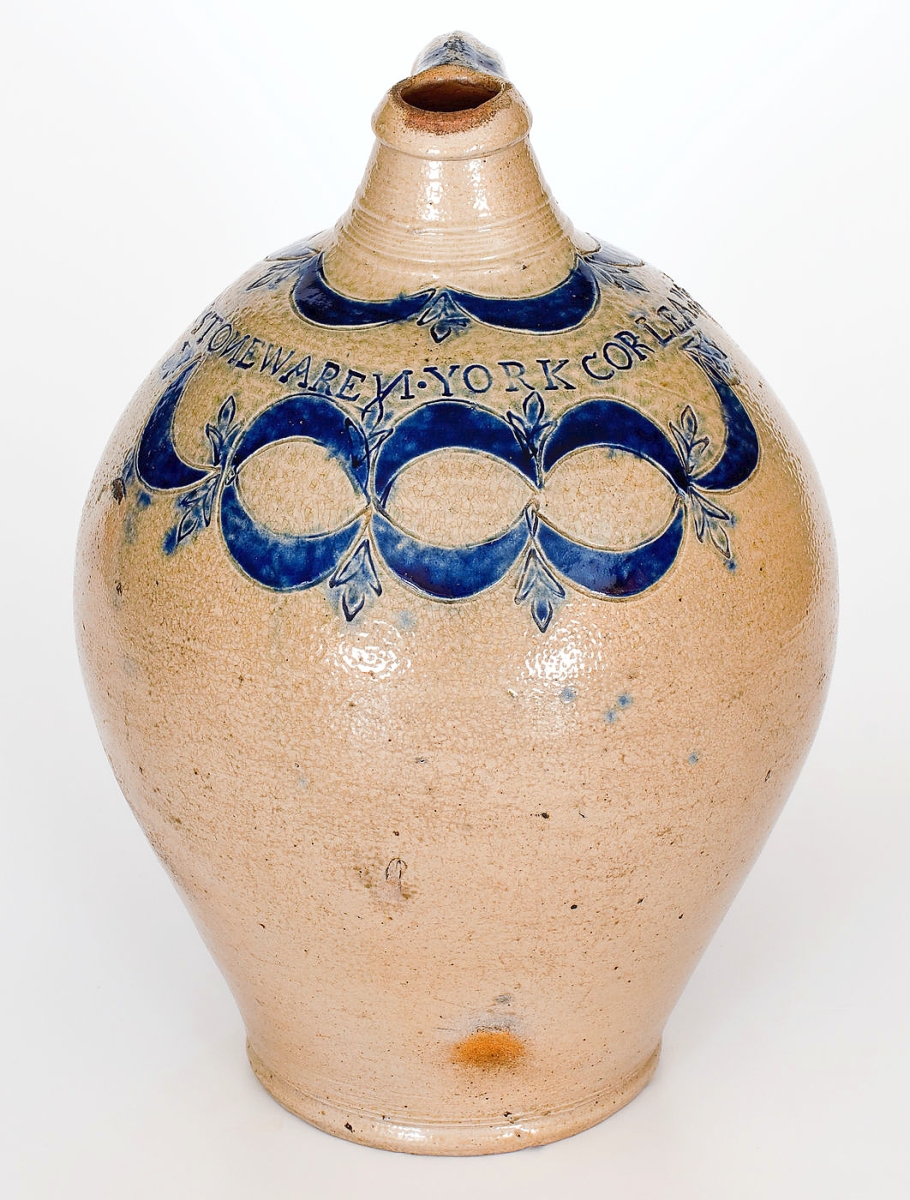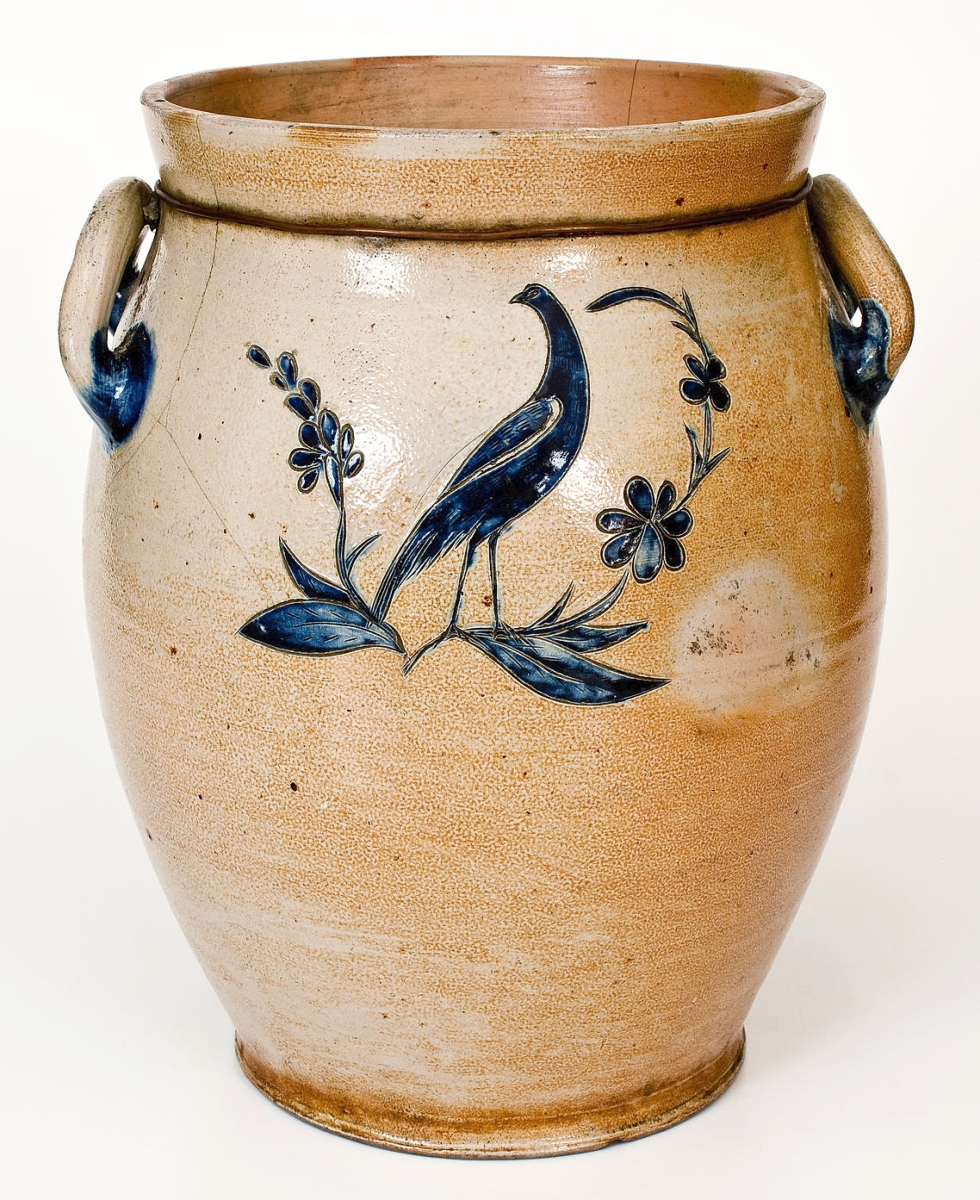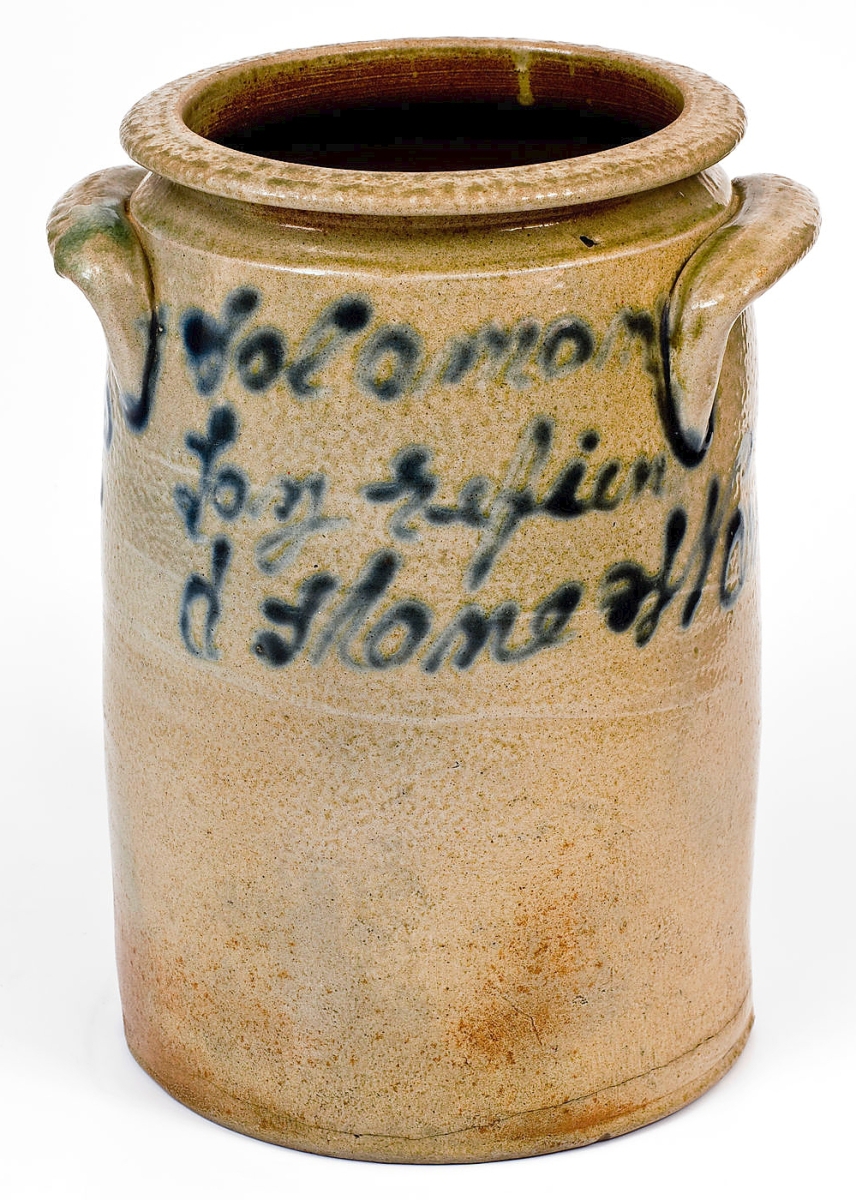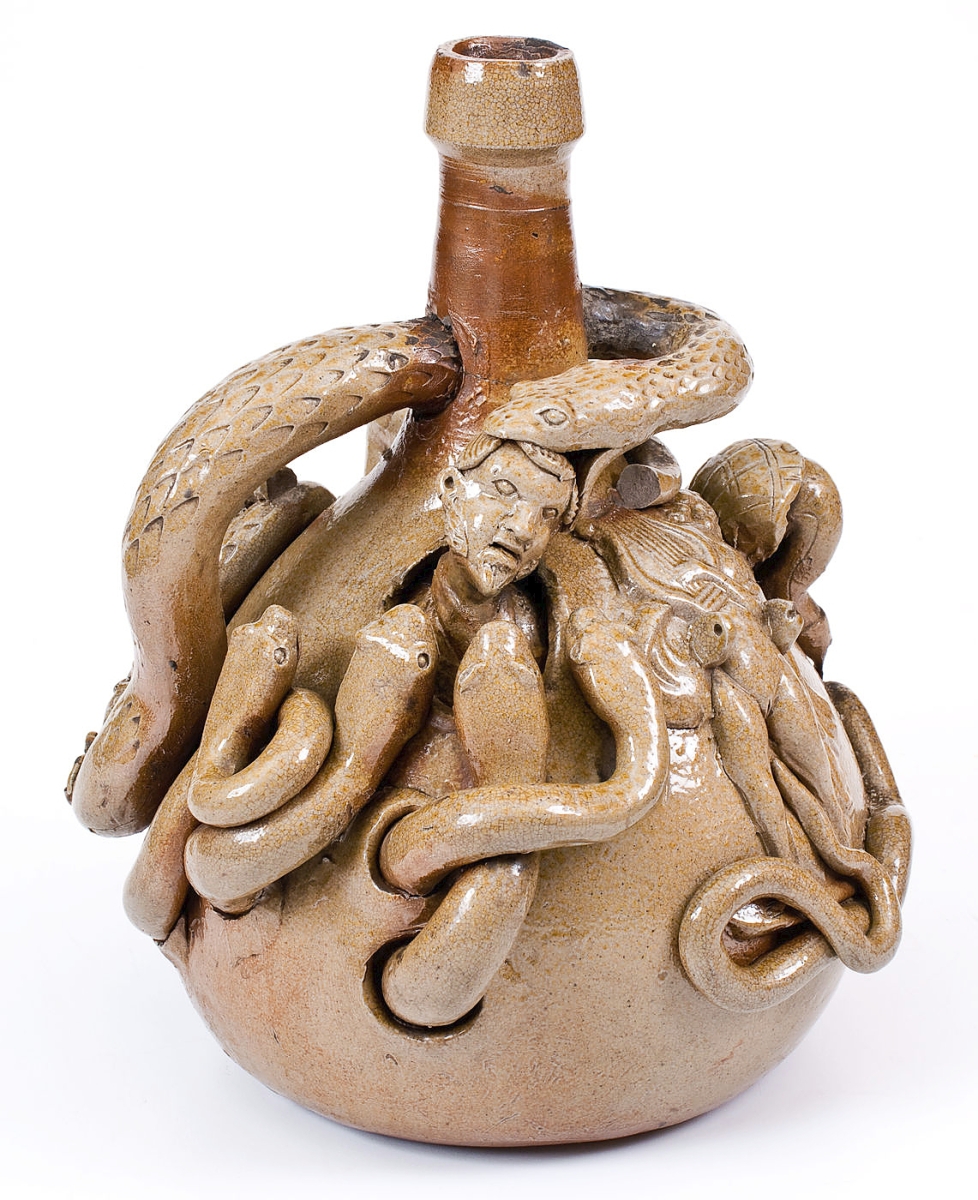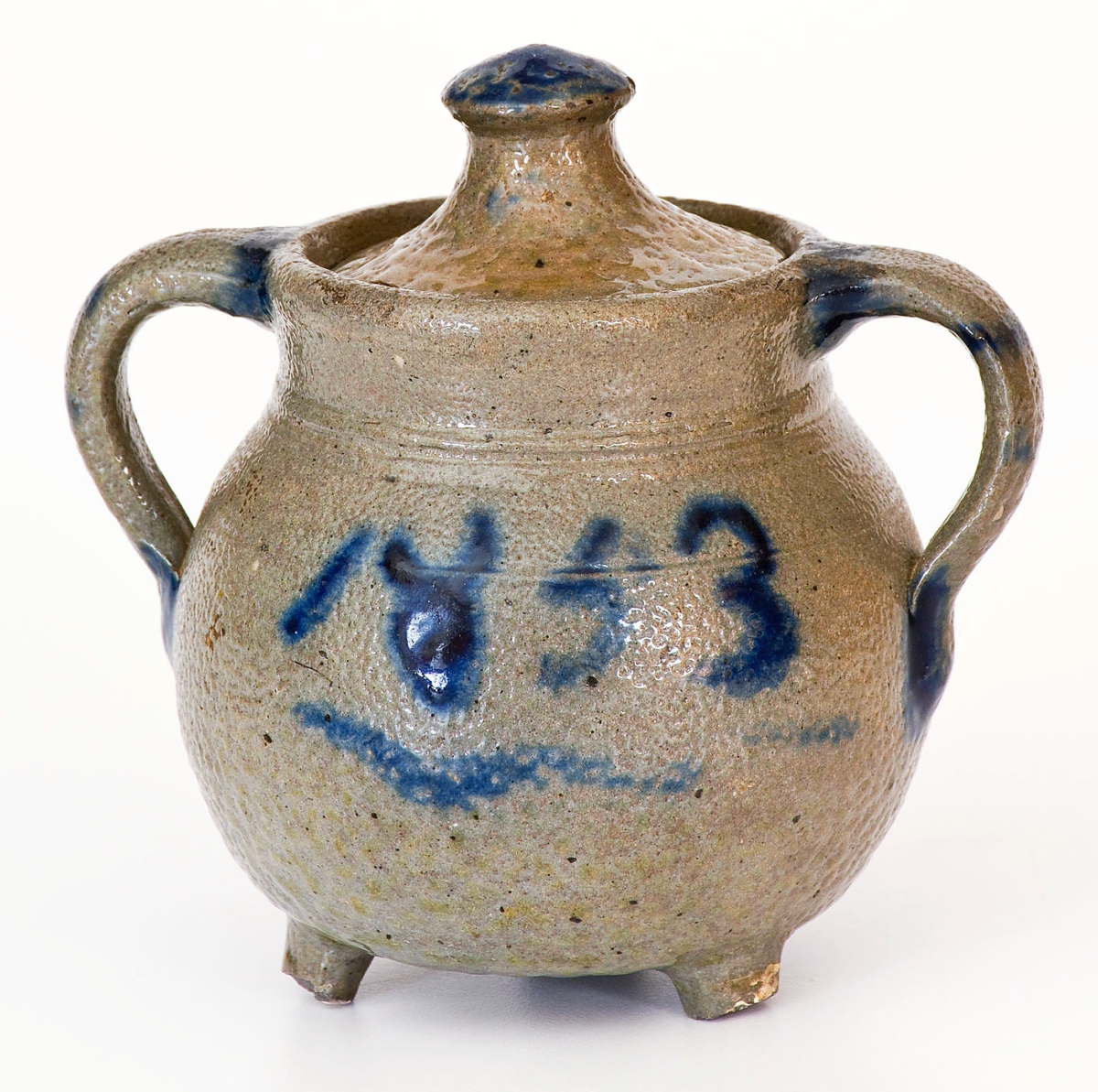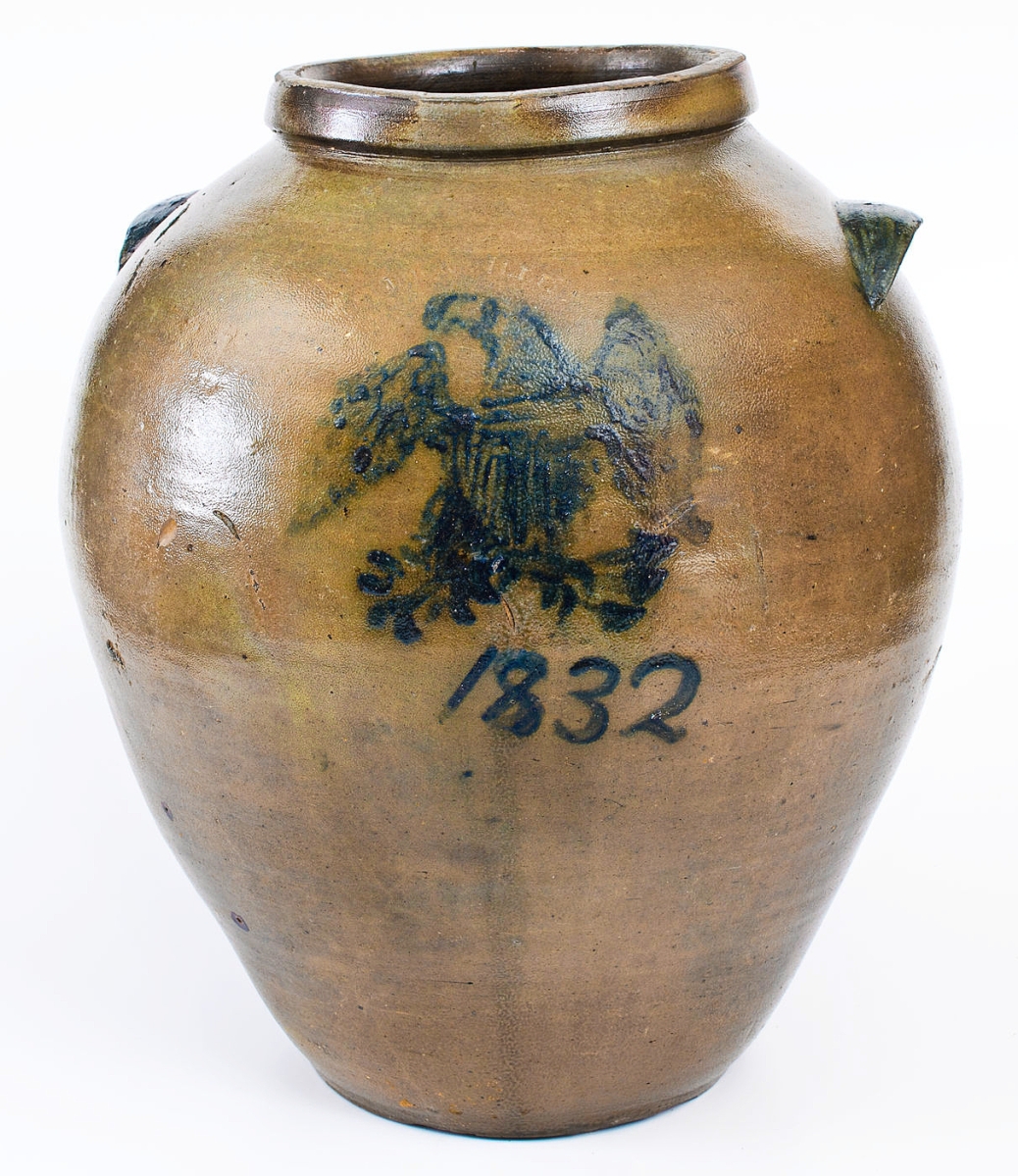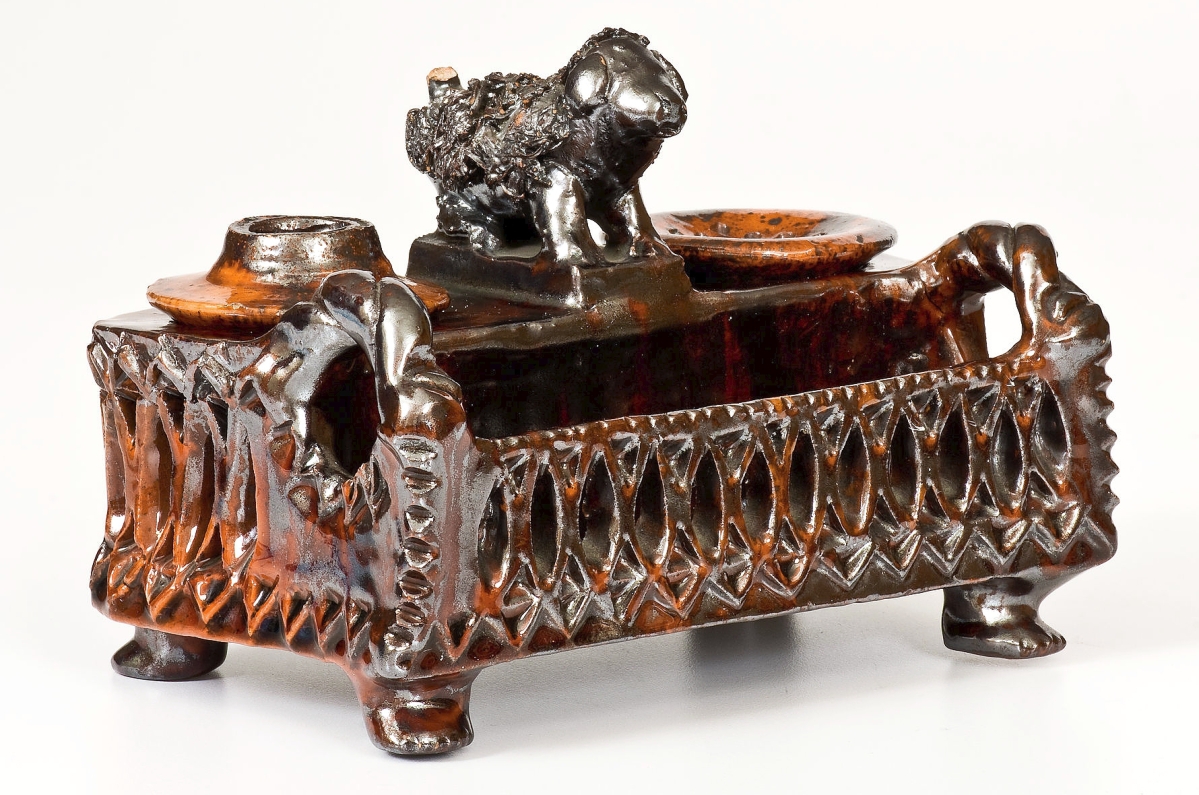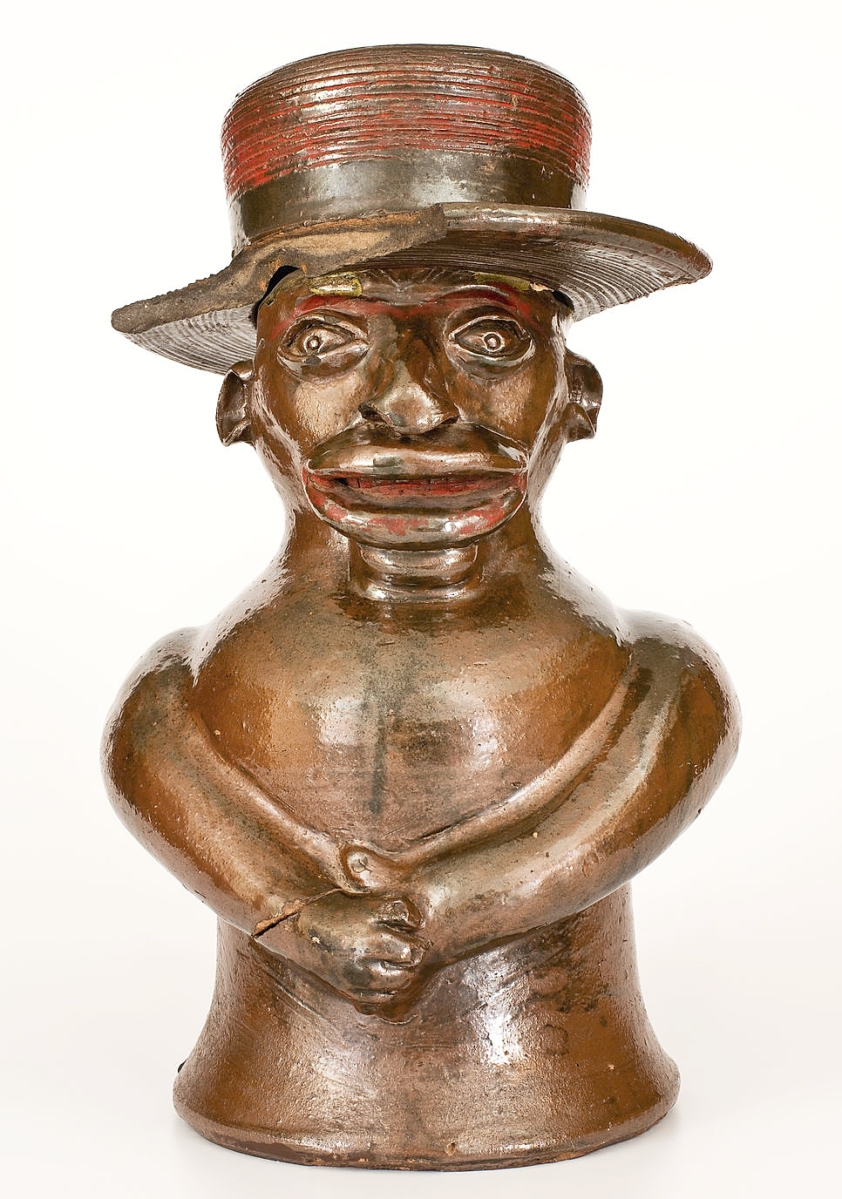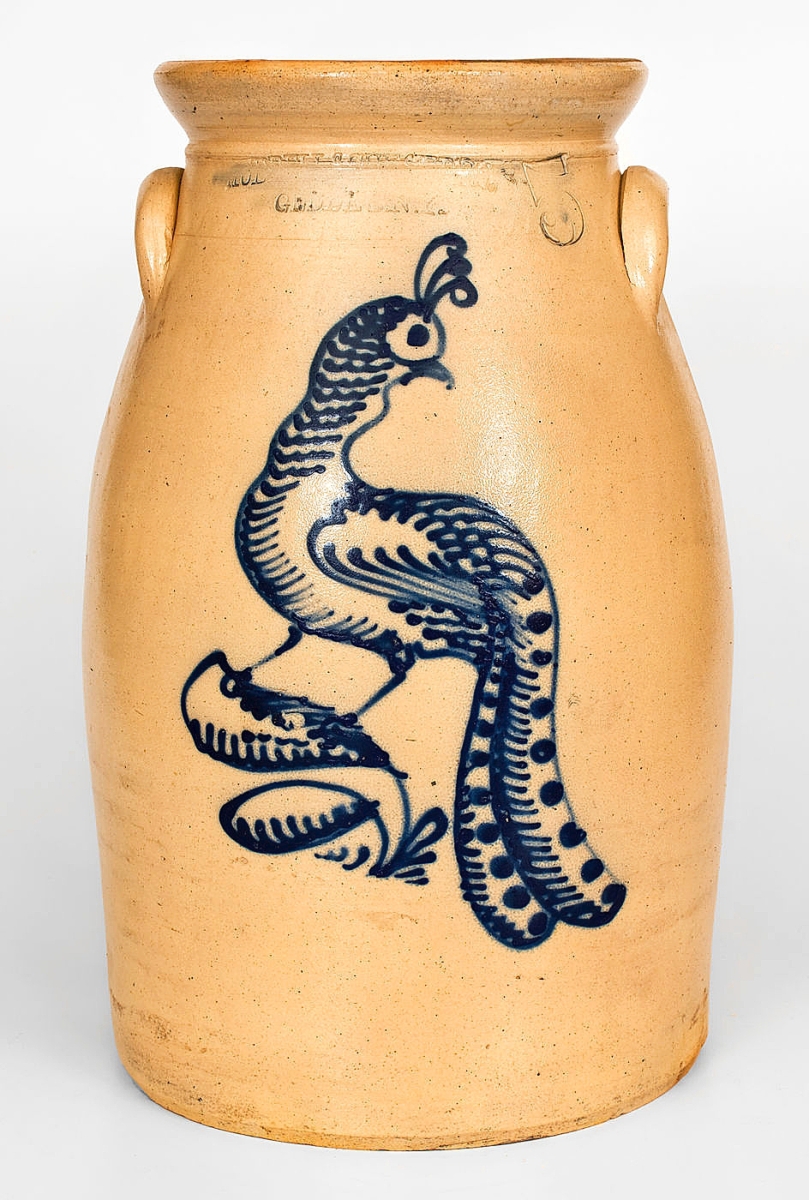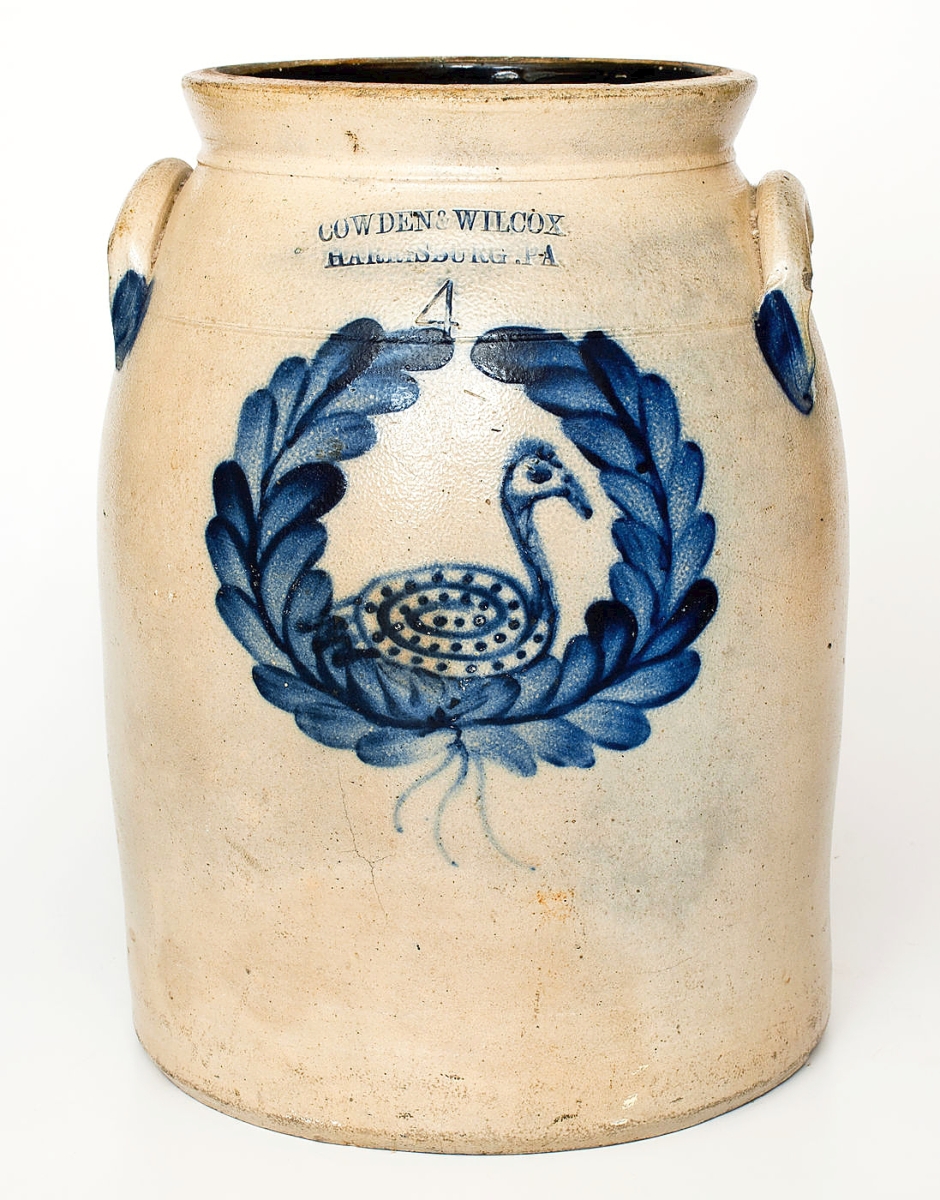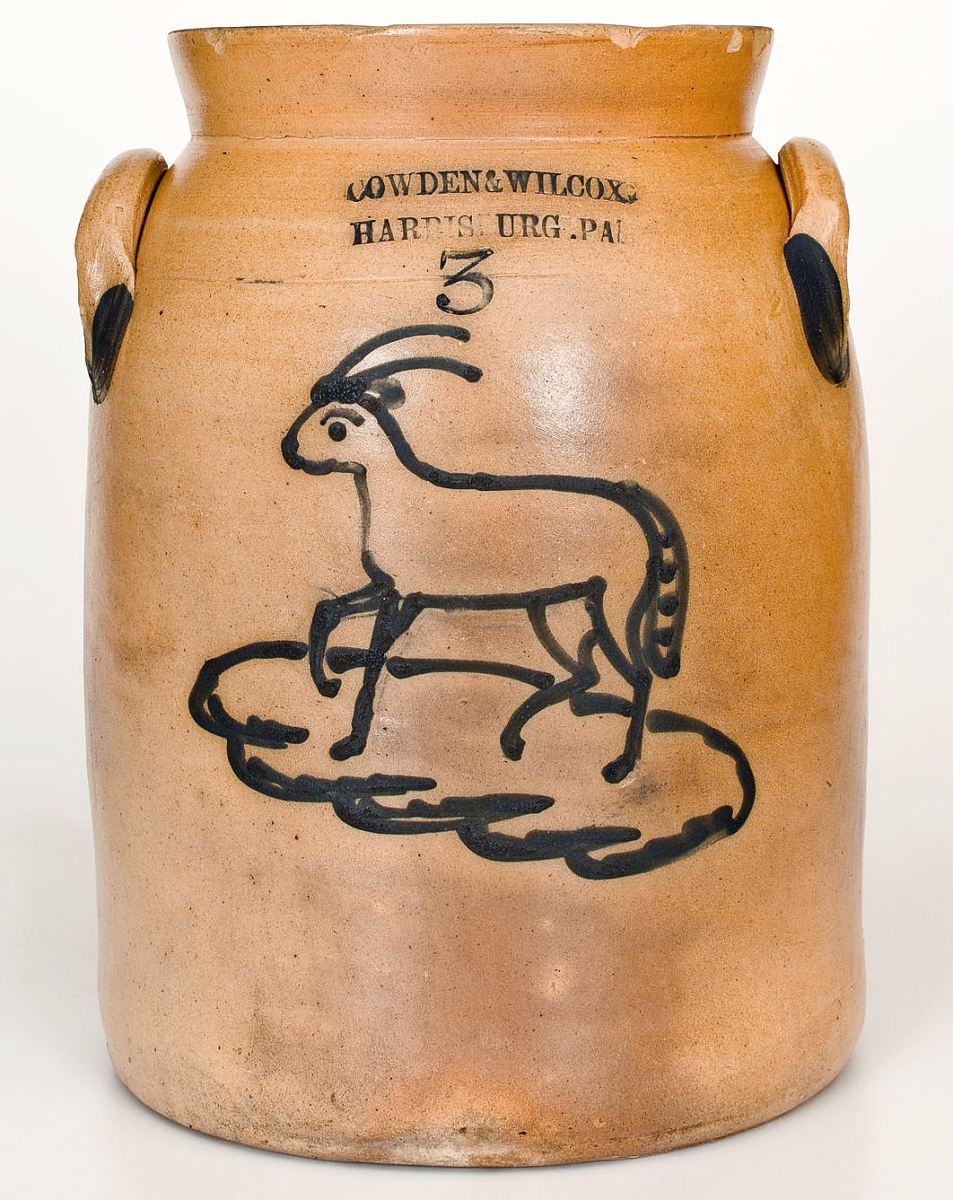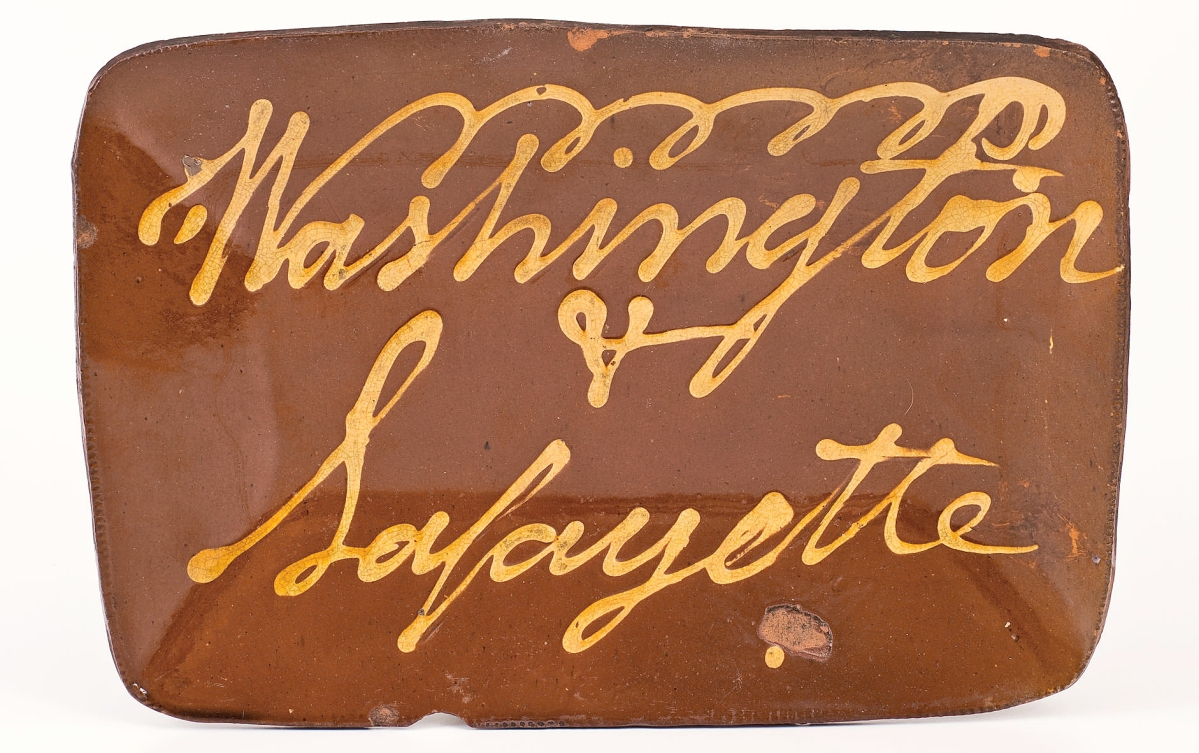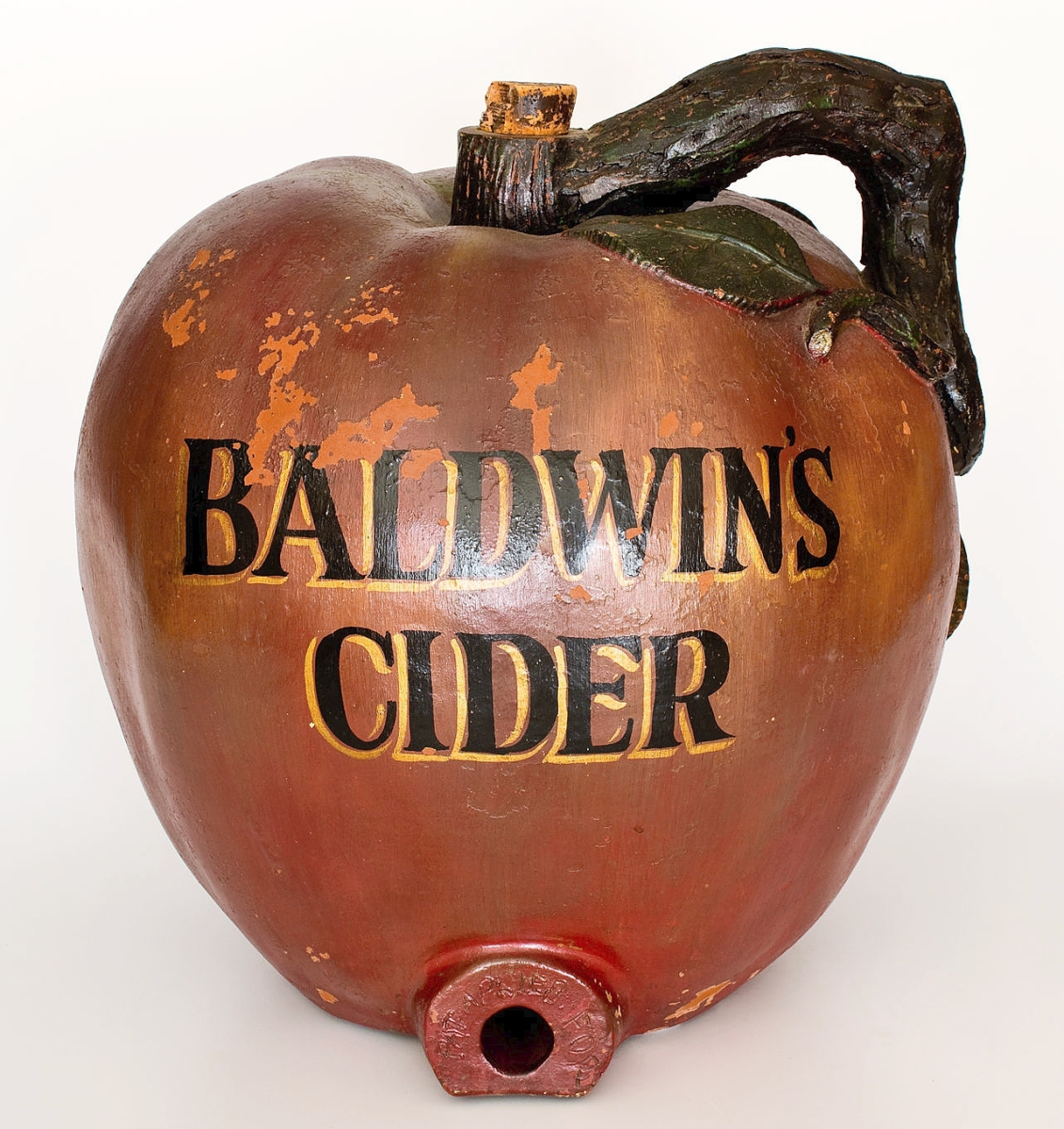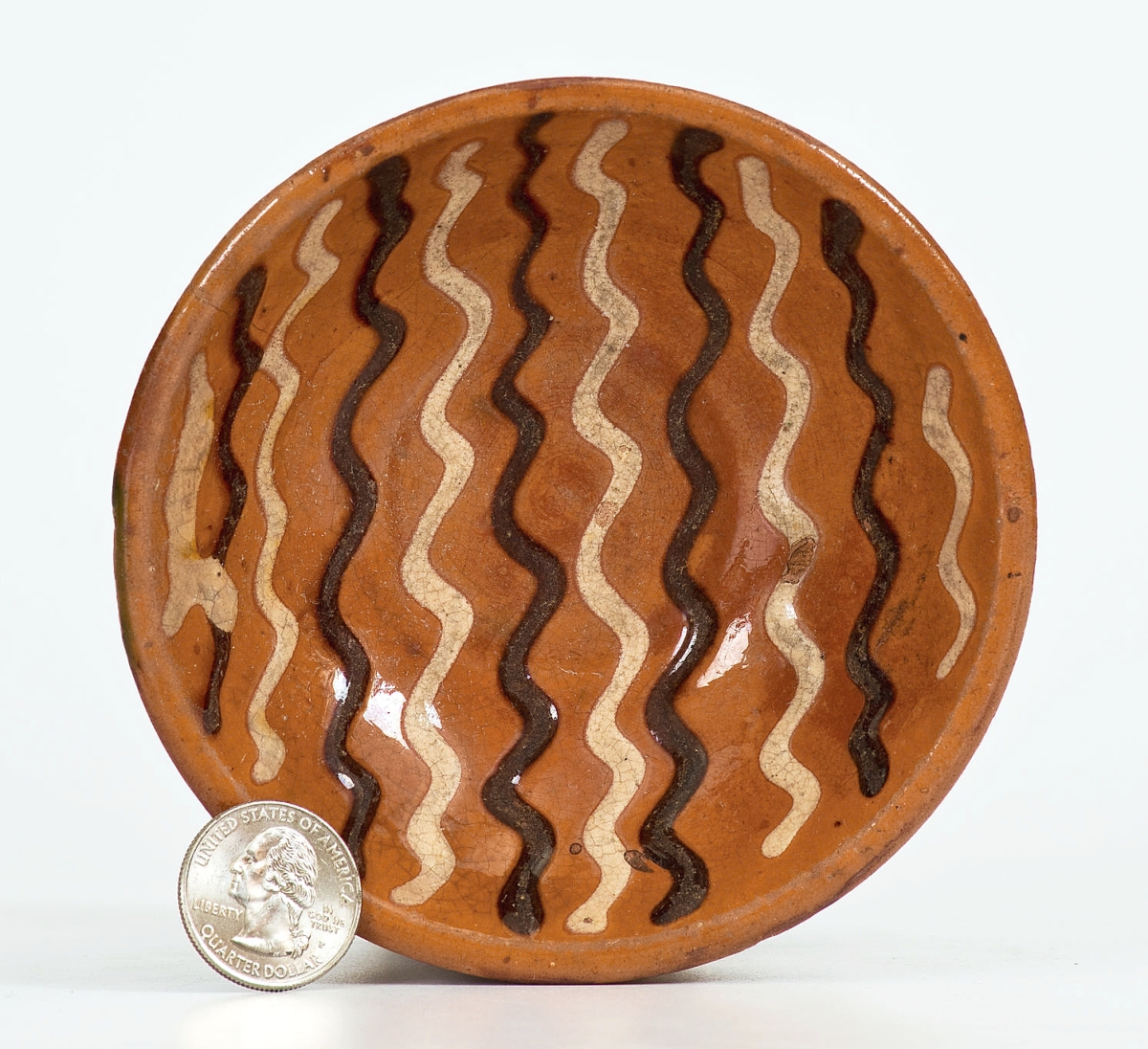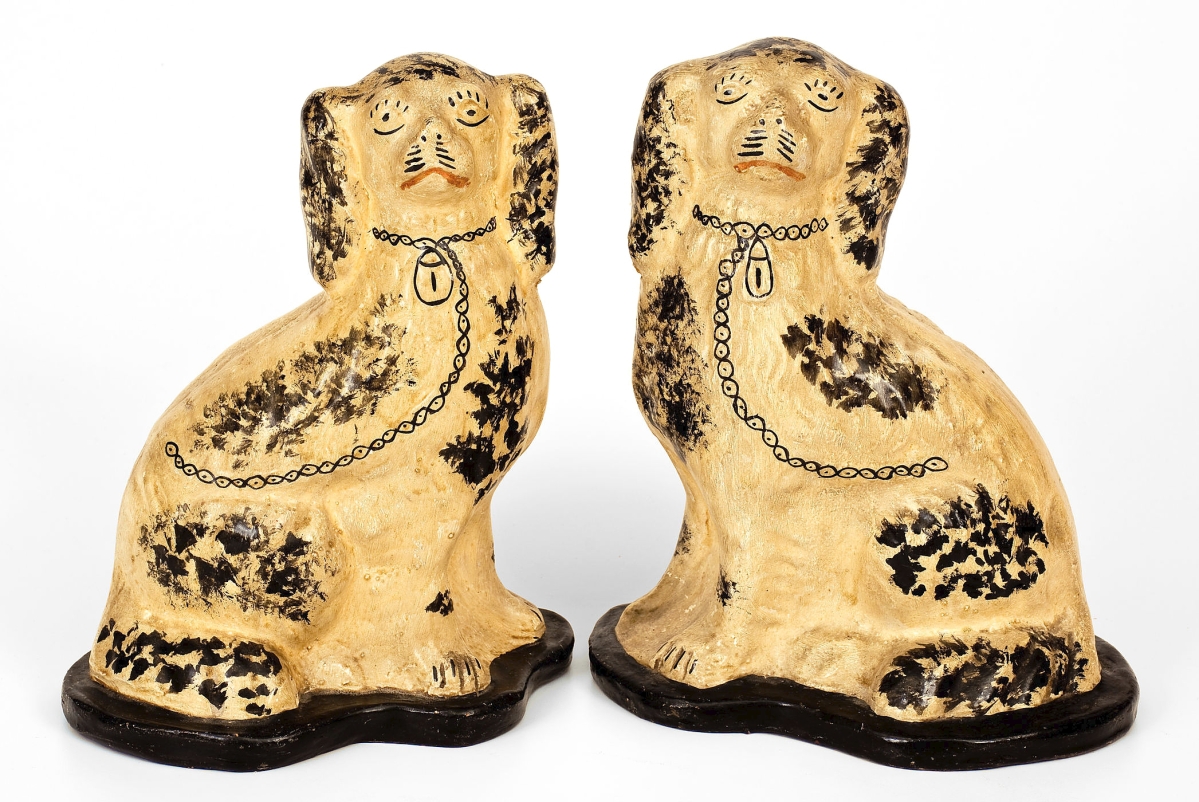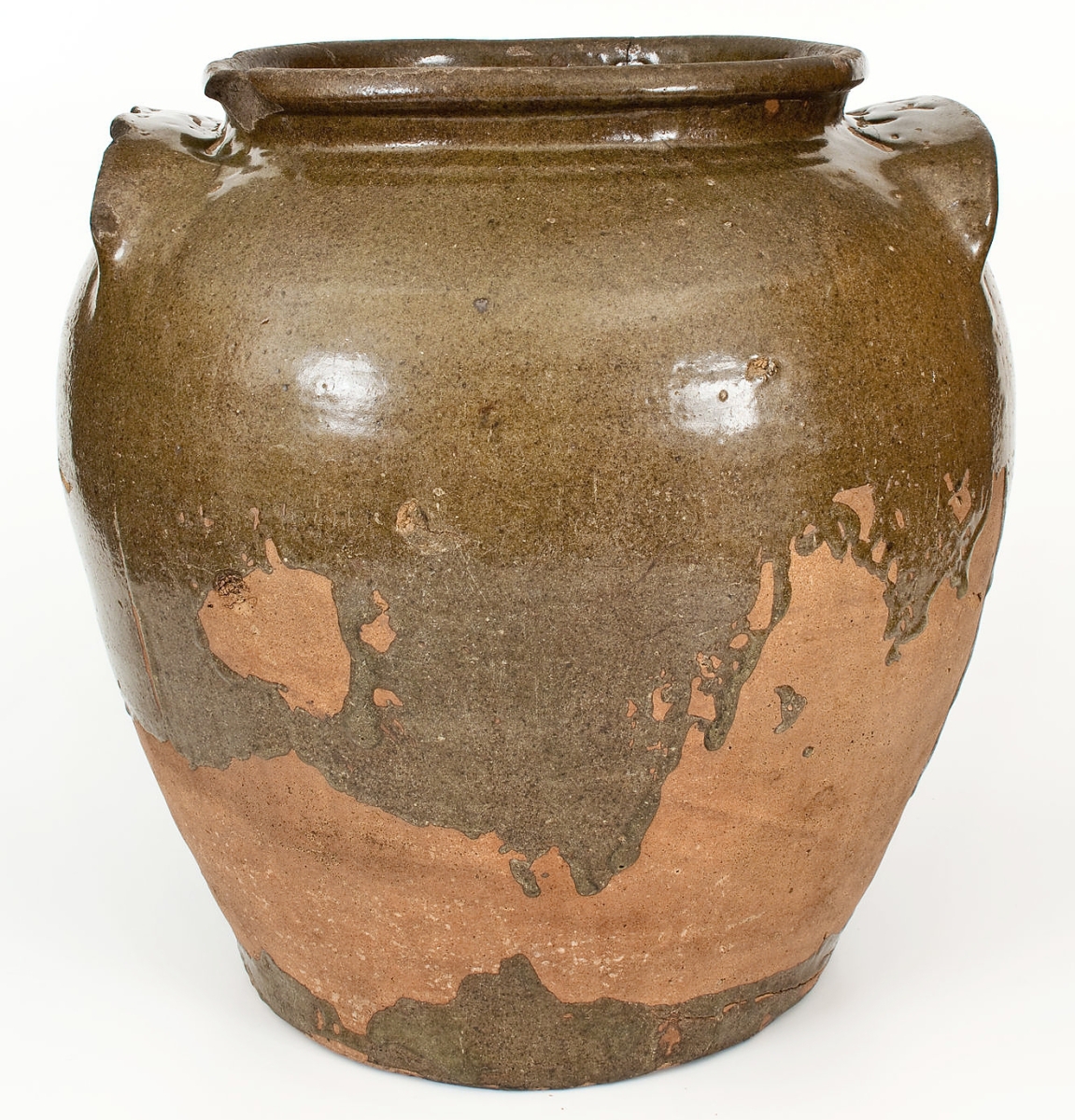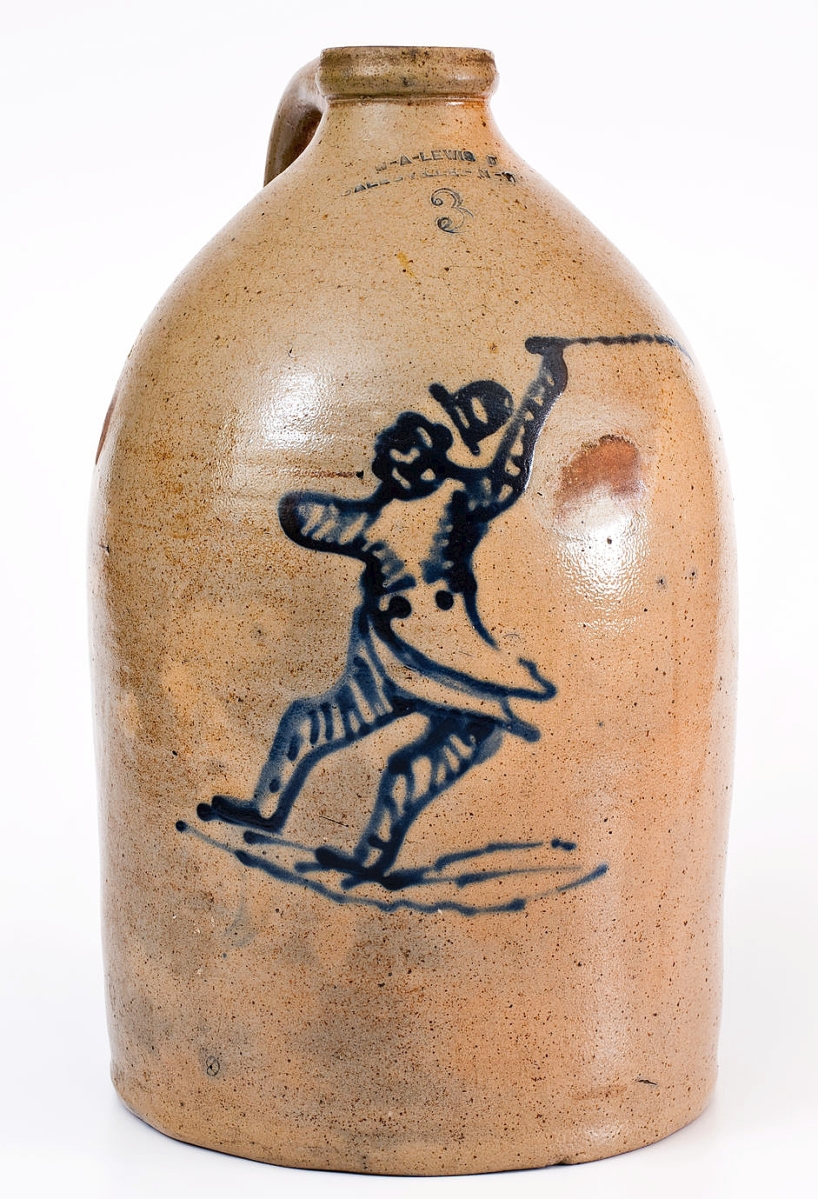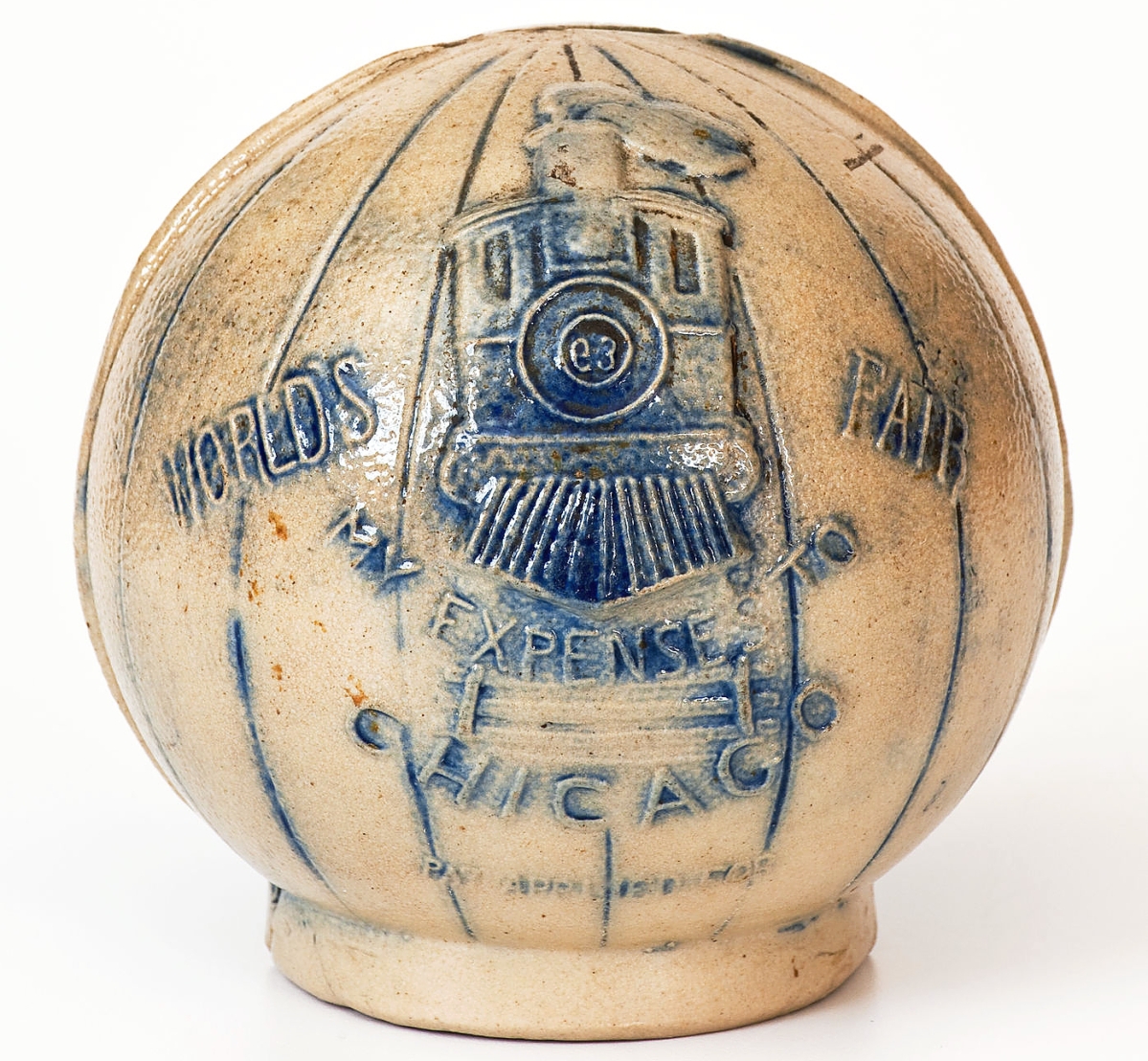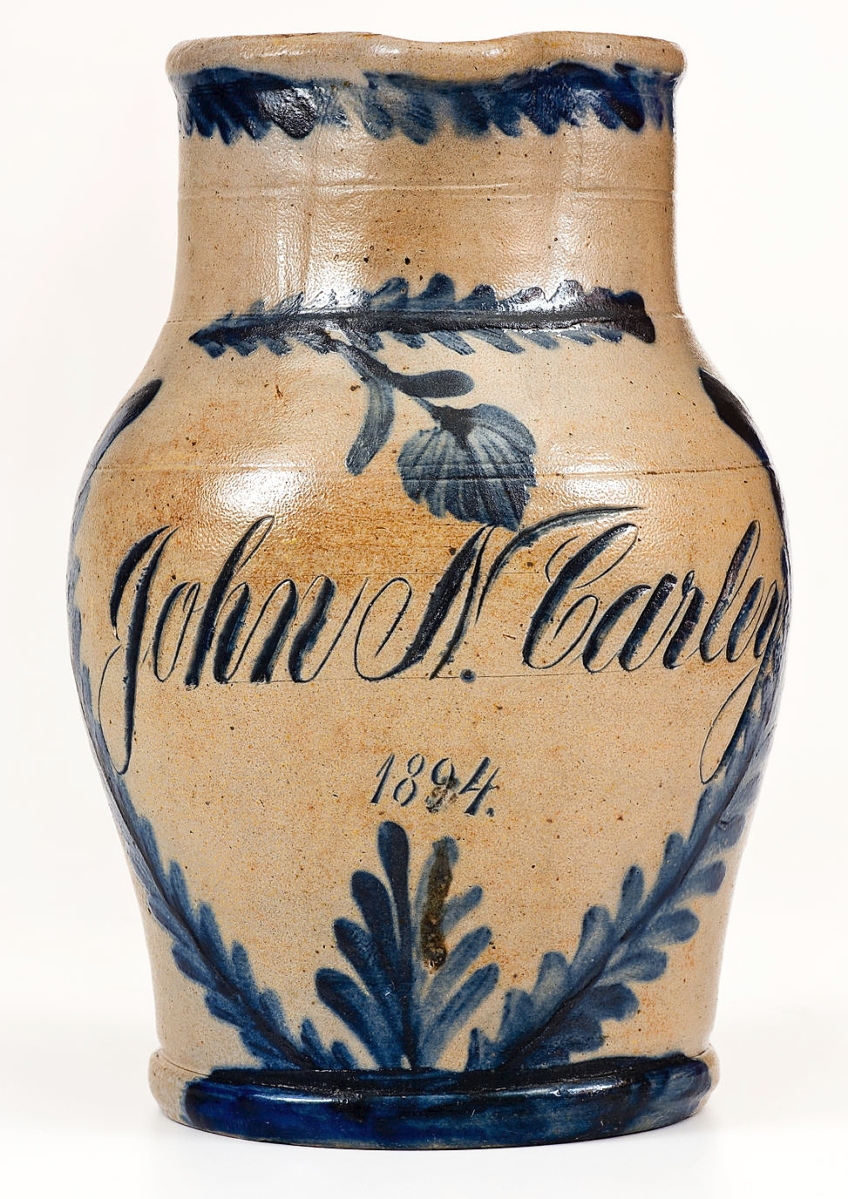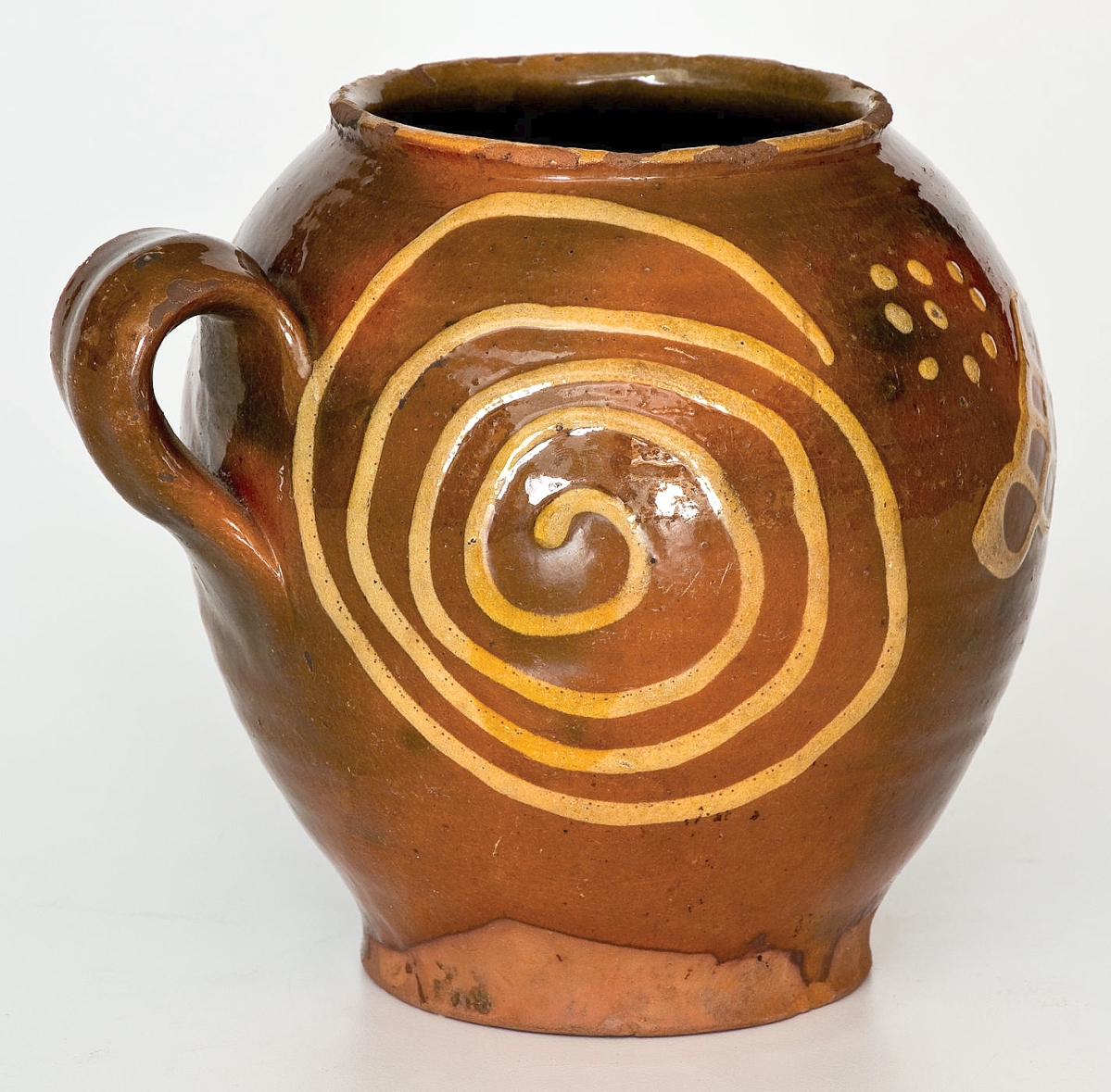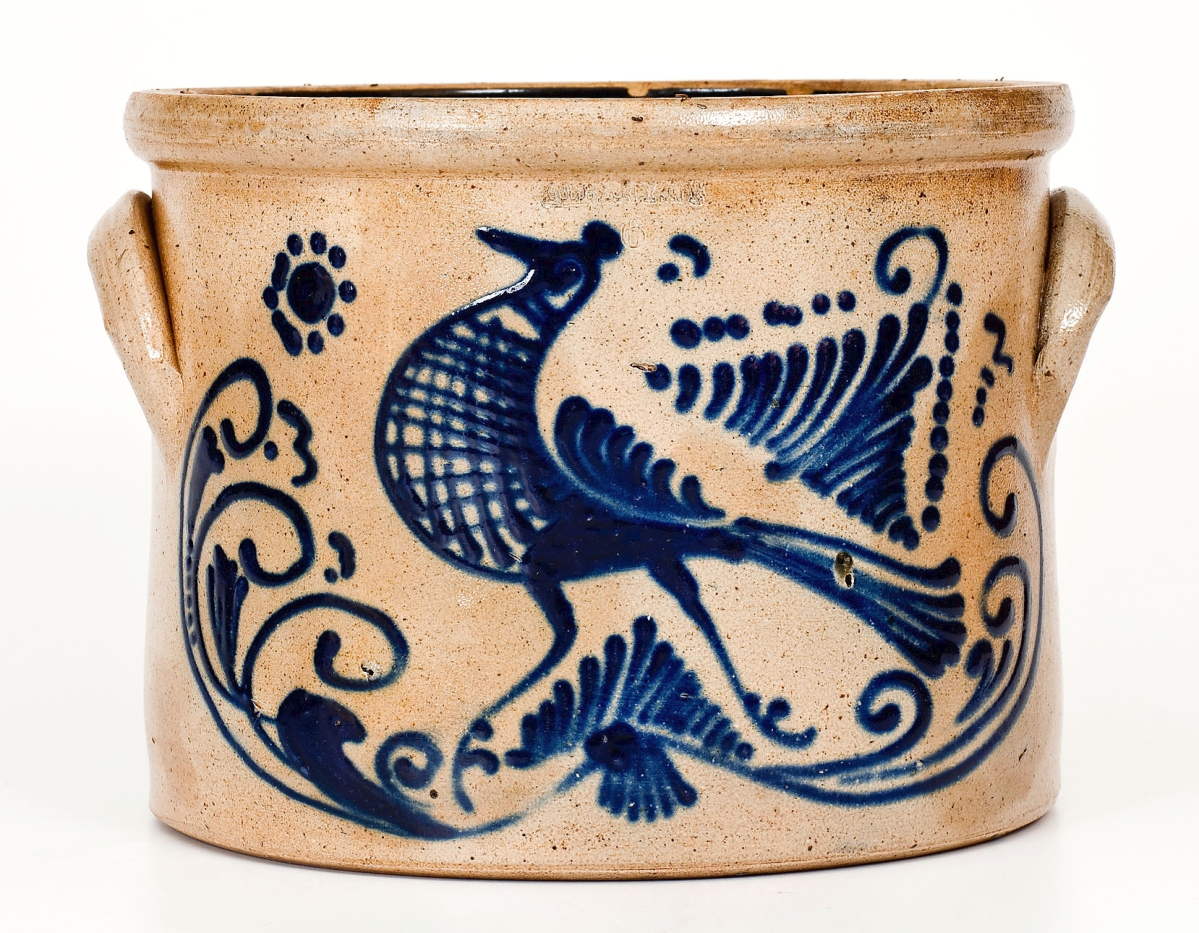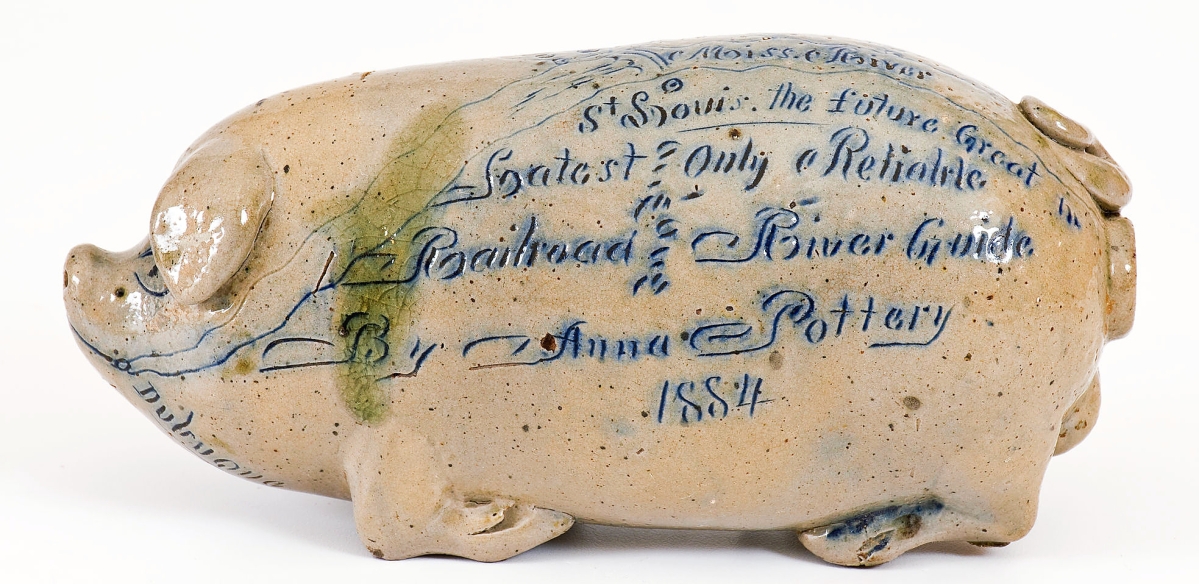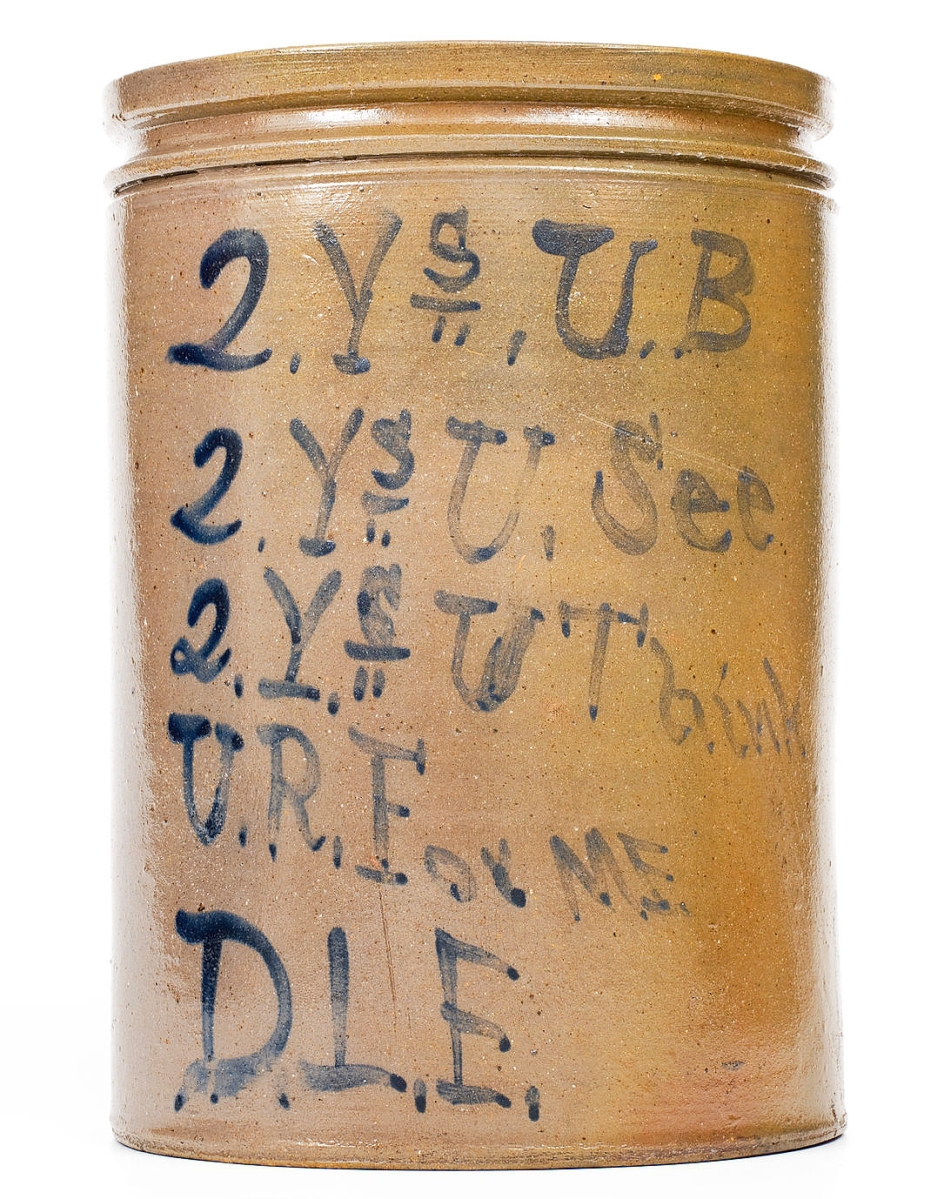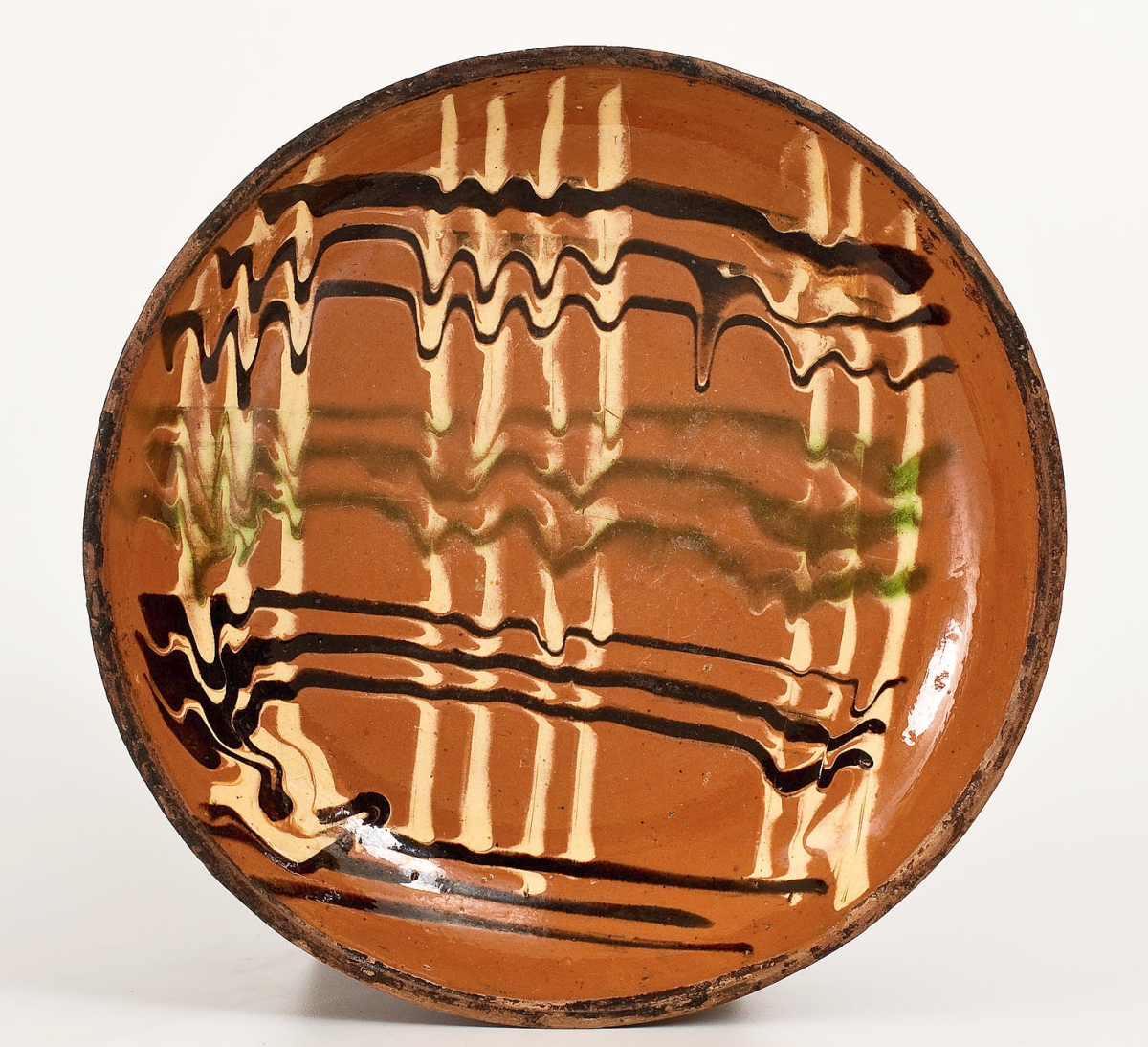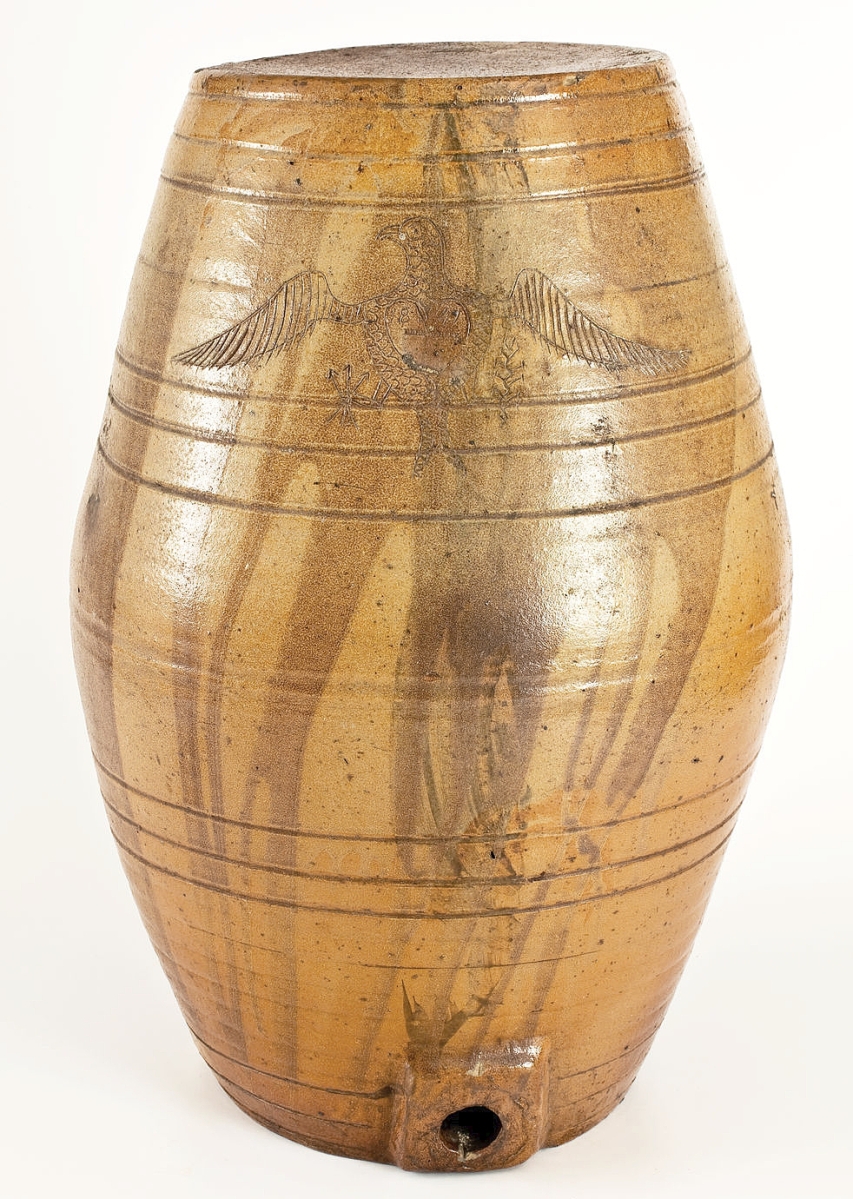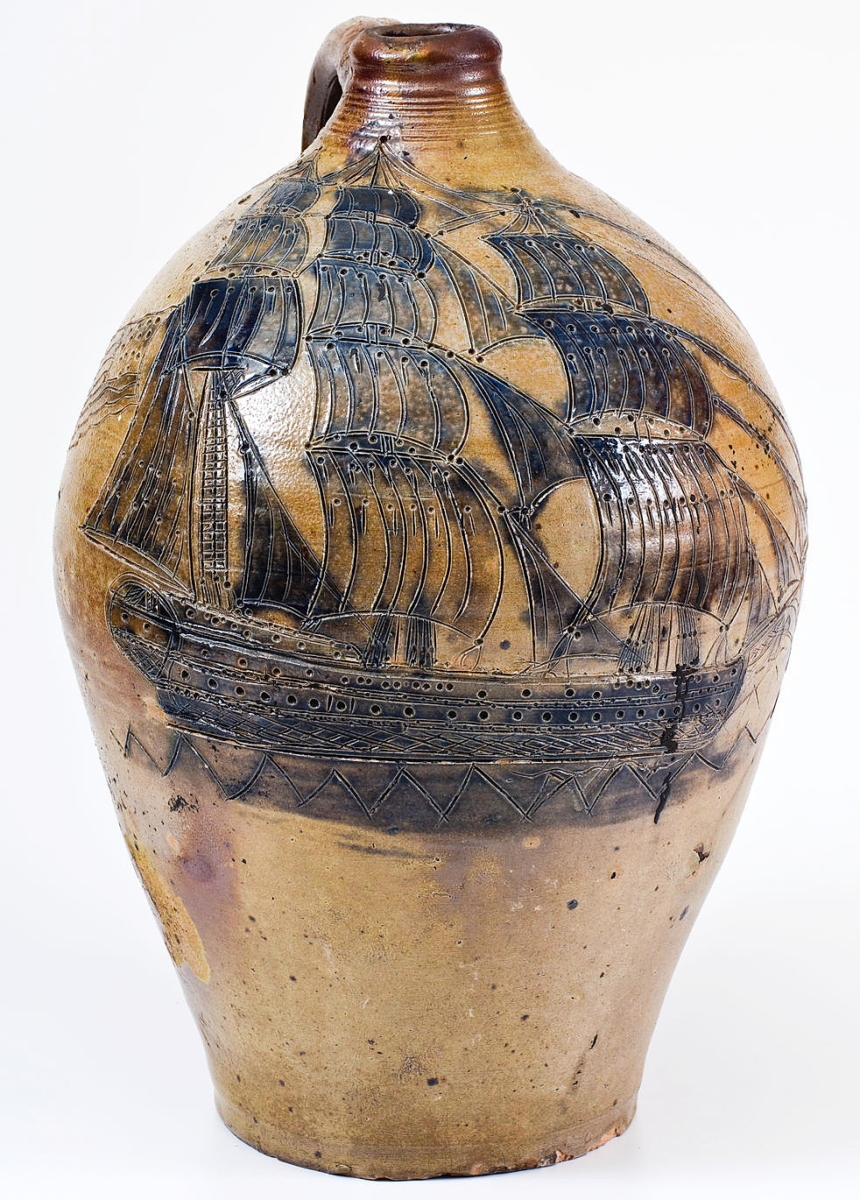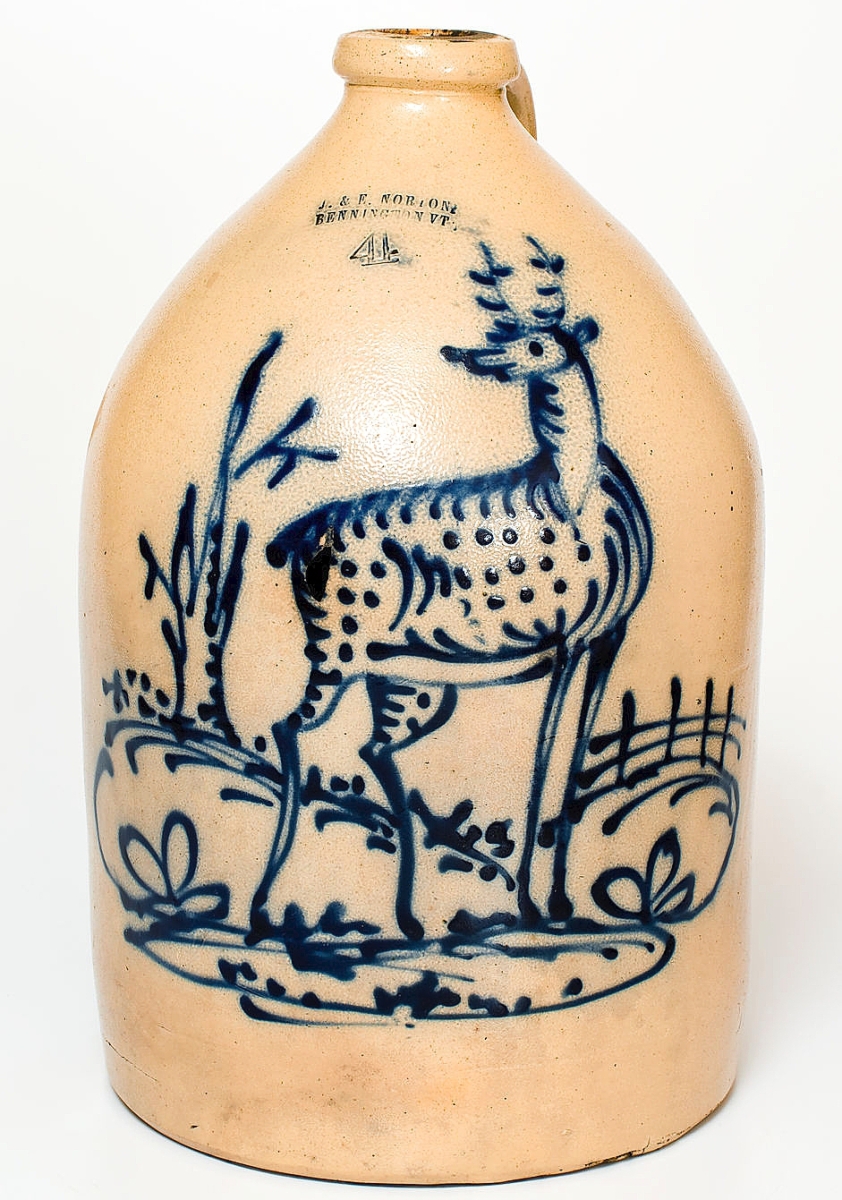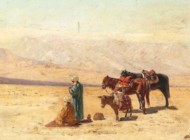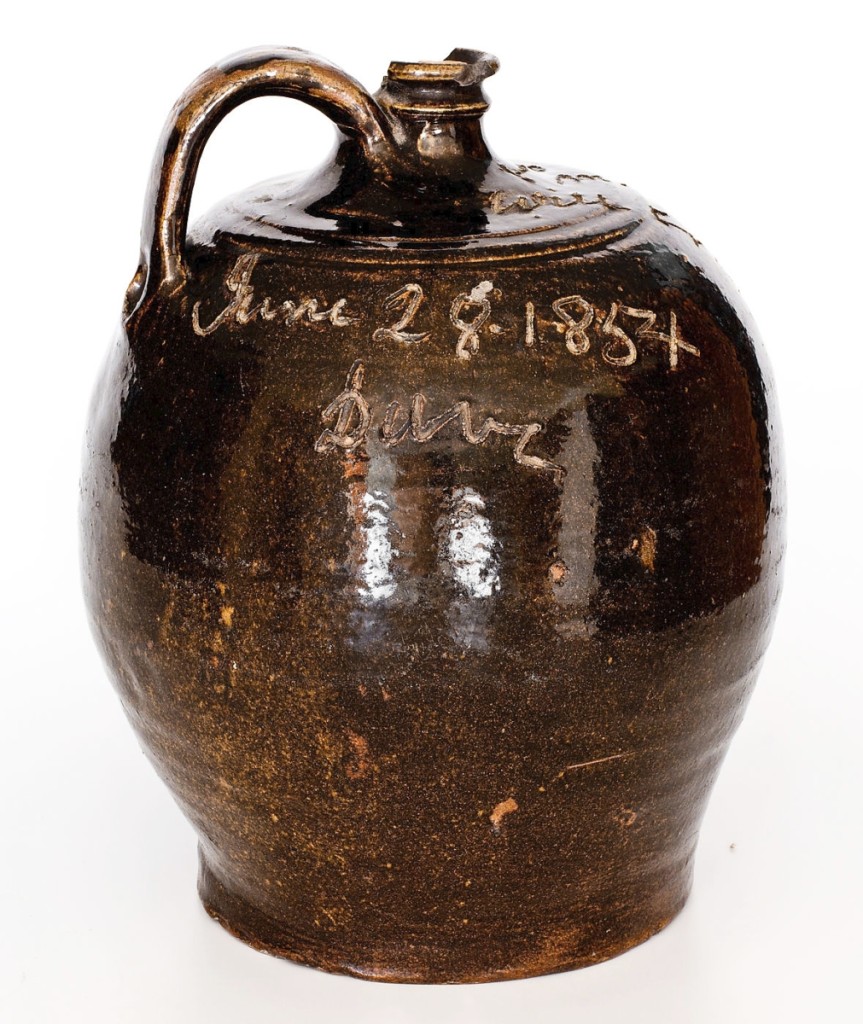
The sale’s top lot at $420,000 was an inscribed 3-gallon alkaline-glazed stoneware jug by enslaved African American potter Dave Drake. The inscription reads, “Lm says this handle will crack,” the initials referring to Lewis Miles, Drake’s slaver. The handle never cracked since it was made in 1854. “It really is one of the only pieces of American art that directly confronts the relationship between the slave and enslaver,” Mark Zipp said. “I think therein lies its most important aspect. But through that inscription we also get a sense of Dave’s personality, he had a sense of humor and a willingness to challenge an authority. It’s a simple slogan, but through that we can extrapolate what this man was like. In that sense, I think it’s one of his most important inscriptions.” The jug sold to an American private collector.
Review by Greg Smith, Photos Courtesy Crocker Farm
SPARKS, MD. – Stoneware collectors took to feasting before Thanksgiving this year at Crocker Farm’s November 5-19 fall auction, a sale that put the cherry on top of an incredible year for the Zipp family and their auction house. The sale grossed $1.74 million and tallied into a $6.5 million year for the firm, its best on record since it was established in 1983.
Rising to $420,000, the sale’s top lot, was an important jug by Nineteenth Century enslaved African American potter Dave Drake. The 3-gallon alkaline glazed stoneware jug was notable for its inscription, “Lm says this handle will crack,” the initials Lm referring to Lewis Miles, Drake’s slaver who owned the Stony Bluff Manufactory in Edgefield, S.C. Since the jug appeared on PBS’ Antiques Roadshow in a 2000 episode, writers and scholars have posited that this example reveals the potter’s humor, his independent spirit and his relationship with Miles more so than any other known work. Most importantly, it vindicates Drake’s knowledge of his craft – the handle has not cracked since it was fired in 1854.
In a 2006 article in Ceramics in America, Dr Arthur Goldberg and James Witkowski wrote, “Lewis Miles’s personal involvement in the stoneware production, as well as Dave’s dry wit and his ability to tease his owner, is revealed in the inscription on the jug…”
The result is a record for a Dave jug and the second highest to date for the potter who set the benchmark auction record for American pottery with a $1.56 million result in August this year at Crocker Farm.
Mark Zipp said the jug had passed down through a family since at least the 1990s. The original owner was not a collector and how he came to own it is unknown.
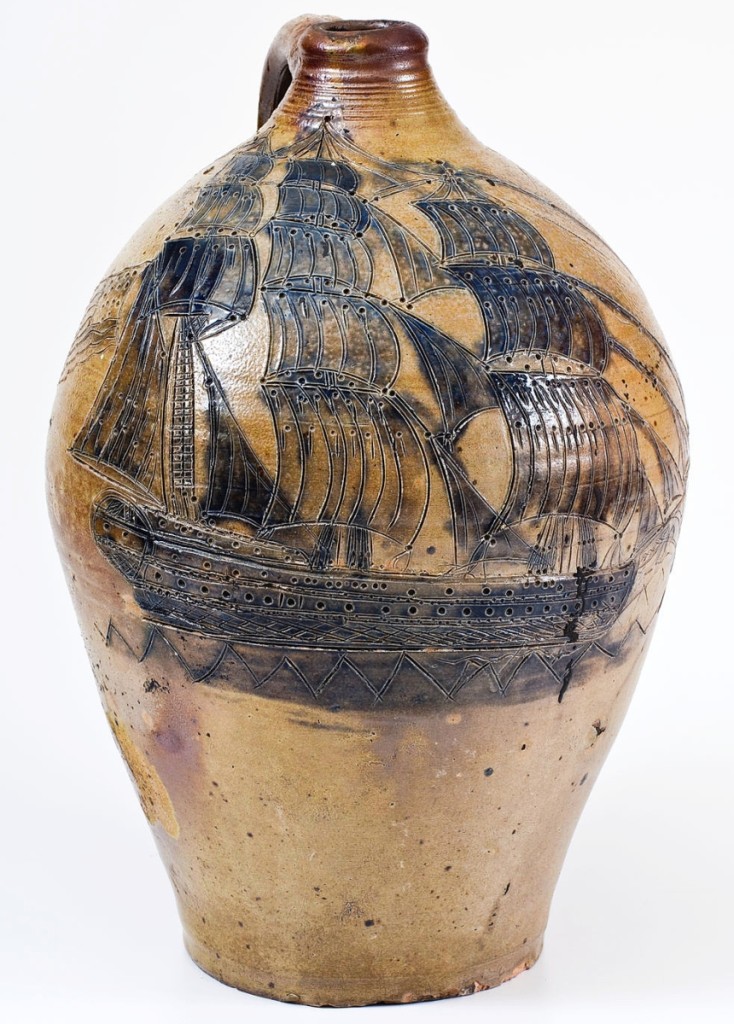
Setting a record for Manhattan stoneware at $240,000 was a 2-gallon stoneware jug that the auction house said was probably from the Crolius family and dated 1791-92 based on the 14-star flag. The elaborate incising “could easily be ranked among the great incised decorations in all of American stoneware,” Crocker Farm wrote. Florida collector Martin Kaye took it home.
“It really is one of the only pieces of American art that directly confronts the relationship between the slave and enslaver,” Zipp told Antiques and The Arts Weekly. “I think therein lies its most important aspect. But through that inscription we also get a sense of Dave’s personality, he had a sense of humor and a willingness to challenge an authority. It’s a simple slogan, but through that we can extrapolate what this man was like. In that sense, I think it’s one of his most important inscriptions.”
It sold to a private American collector.
It was close to exactly one year ago that the auction house sold a stoneware watercooler by New Jersey potter Abial Price with an extraordinary incised and cobalt decorated image of a ship on its front for $252,000. The result found a mate when a newly surfaced 2-gallon stoneware jug with an image of a sailing ship sold for $240,000 to Florida collector Martin Kaye this sale. The Zipps said it was made in Manhattan and likely by the Crolius family, circa 1791-92. It would set a record for Manhattan stoneware.
Comparing the two results, Zipp said, “They’re two different schools. This one was a larger, more elaborate ship on a jug from Manhattan. Manhattan is the pinnacle of early American stoneware. The other is a great double-handled watercooler form. The pieces are comparable in design only, but they’re two different locations and the Abial Price example was made 40 years later. They represent two of the best ships known.”
A record for Baltimore potters William Morgan and Thomas Amoss was set at $84,000 with a 2-gallon stoneware jar with incised and cobalt decorated bird decoration. Zipp said he knows of only five bird decorations on a work from this site, including one at MESDA, and this is the only one signed for the partnership. “Morgan and Amoss is a rare mark,” he said, “And most have slip trailed designs. There’s a good chance that this bird was done by Morgan, it relates to some others found with his name alone. The designs are very closely related to Remmey family designs, designs they brought to Baltimore in 1812. So they’re doing their rendition of Remmey birds and there are subtle differences in style.”
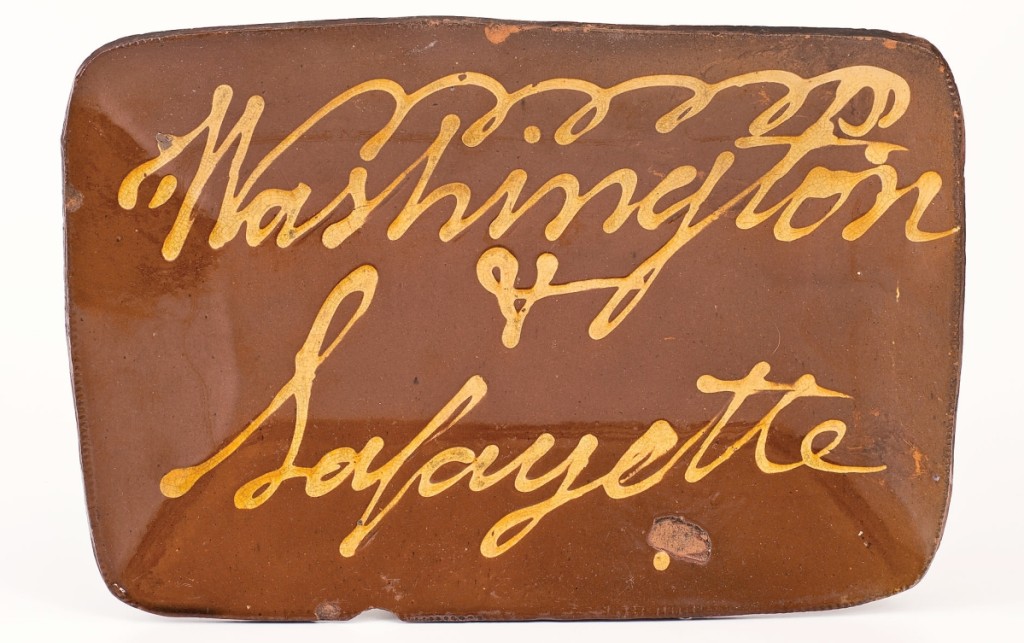
A fine redware loaf dish with flourishing W was the prize offering in that medium this sale. It sold for $21,600. The auction house said it was made in Norwalk, Conn., and possibly on the occasion of Lafayette’s 1824 return to America. Ex Lew Scranton collection.
A $96,000 result would push the artist auction record for African American potter Thomas Commeraw higher. His 15-inch-high 3-gallon stoneware jar with drape-and-tassel motif was purchased by Virginia dealer Rob Hunter. The jar is unique in its single-line maker’s mark stamping that encircles the spout. Commeraw more typically stamped his wares in multiple lines. “There’s only a handful of Commeraw examples that reach this level where the stamping is more elaborate, the color is exceptional and the bodies are more ovoid,” Zipp said. The jar was consigned from a Midwest collection.
Its new owner, Rob Hunter, called it “an American ceramic treasure.” He said, “From an aesthetic standpoint, the 3-gallon jug produced by Thomas Commeraw is one of the most beautiful examples of early Nineteenth Century American stoneware. Its significance, however, is further amplified as being a product of this country’s first free African American pottery manufacturer. Unlike most anonymous stoneware of the period, the owner’s name and the place of manufacture is confidently and boldly incorporated into the graphic design. The courageous story of Thomas Commeraw, his business acumen and his promotion of the abolition of slavery, will be at the forefront of planned research initiatives and public programs in the future. In the past, I have placed several significant examples of Commeraw’s stoneware in both private and public collections. This important example would be at home in any art museum in the world.”
While stoneware was certainly the main course at the auction, redware had its moments. “People pay for slip,” Zipp said on why the highlights performed so strong. Reaching $21,600 was a Washington & Lafayette platter from Norwalk, Conn., the auction house noting it was possibly made during Lafayette’s storied return to America in 1824. The design was notable for its looping flourish off the W, which continued across the top of the platter. It had provenance to Lew Scranton and was pictured on the cover of Slipped & Glazed: Regional American Redware. At only 4-5/8 inches diameter, a redware dish from Pennsylvania with profuse two-color wavy slip decoration sold for $20,400. “It’s so flashy,” Zipp noted. “The more elaborate the slip, the better, and you couldn’t really add much more to that dish.” It came from the collection of the late Lewis Fenley “Dusty” Parker, along with a Berks County redware plate with crosshatched three-color slip decoration that sold for $9,600. The same price was paid for a small sized loaf dish with coggled edge and two-color wavy stripe design measuring 10¾ inches long.
A redware inkstand by Shanksville, Penn., potter John Grady sold for $10,800. The stand featured a pierced gallery with applied dog atop and related to an example by John Grady’s father, Henry, that Crocker Farm sold from the Kelly Young collection in 2010. “These are the only two inkstands that I know of from Somerset County, Penn.,” Zipp said, “Though there are some other pieces, sugar bowls, made in the area with similar pierced work. For whatever reason, western Pennsylvania is not well known for redware, but this school of potters, the Grady and Swank families, produced a small number of particularly elaborate pieces and this is one of them.”
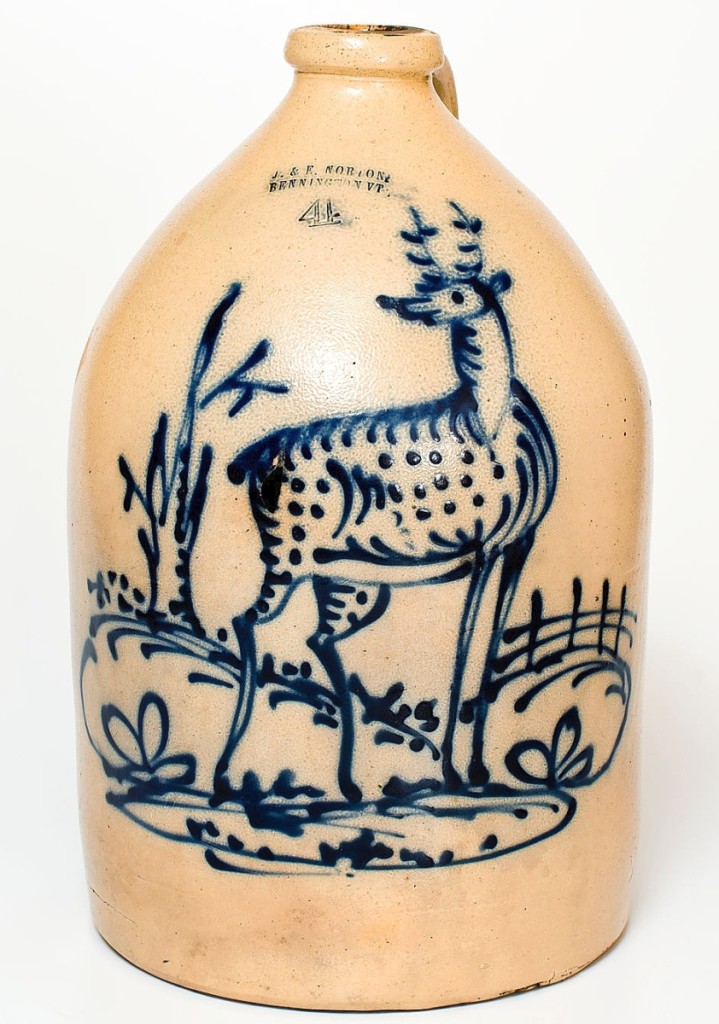
A record for a Norton pottery deer, this 4-gallon jug from the Bennington, Vt., potters, circa 1855, sold for $54,000.
Setting a record for Missouri stoneware was a $36,000 result for an 1832 jar stamped for Boonville with a brushed cobalt Federal Eagle design. The Missouri town is better known among collectors for the Albany slip-decorated snake jugs made at the end of the Nineteenth Century, but this jar may be the earliest piece of Missouri stoneware known, Zipp said. The auction house attributed it to Marcus Williams, who grew up in Rockbridge County, Va., at the same time Manhattan-trained potter John Morgan worked in the area. Known work from Morgan includes the use of brushed eagles and this may have passed to Williams at the time. A period advertisement places Williams in Boonville in 1833 and this represents the only known example known with the Boonville mark.
The Bennington, Vt., J&E Norton pottery, renowned for its cobalt deer, saw one of the best examples of that decoration cross the block for $54,000, a record for a Norton deer. The 4-gallon stoneware jug had provenance to Bennington pottery scholar Richard Carter Barret, who wrote a number of titles on the pottery produced in that area. In an accompanying letter, Barret wrote that when he purchased it in 1953, it was the first standing stag he had ever seen for sale.
Crocker Farm typically has a face jug or two in every sale, though this edition’s wasn’t from Edgefield – it was from Alabama. As the face jug tradition spread west from the East Coast to as far away as Texas, the forms morphed into regional styles. “For whatever reason, Alabama potters put more of a focus on creating them in a figural form as an entire torso rather than just the face,” Zipp said. Best known among these examples are the works of John Lehman, but the tradition spread throughout the state to potters in other areas. A 16¾-inch-high African American Preacher face vessel sold for $42,000, the auction house positing that it may have been created by Edward Rushton, an ex-slave to the South-Carolina-trained Rushton family of potters. The work has a number of stylistic similarities to another Preacher vessel that was auctioned in 1999 from the John Gordon collection and discussed in John Michael Vlach’s The African-American Tradition in Decorative Arts and pictured in Robert Bishop’s American Folk Sculpture.
Crocker Farm’s next auction will run from March to April. All prices reported include buyer’s premium. For more information, www.crockerfarm.com or 410-472-2016.

